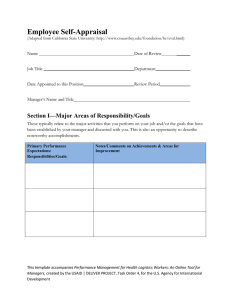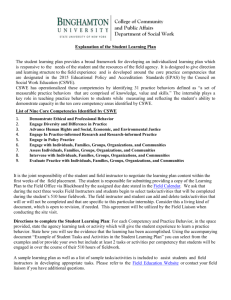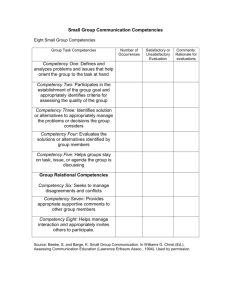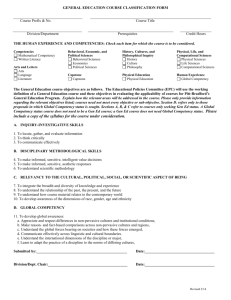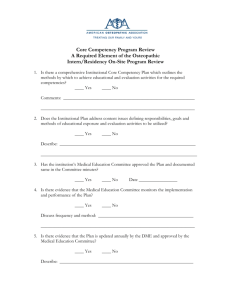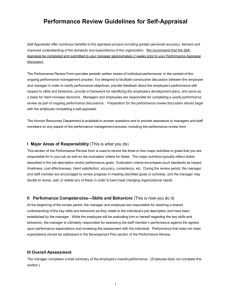Steps in Writing Course Learning Outcomes
advertisement
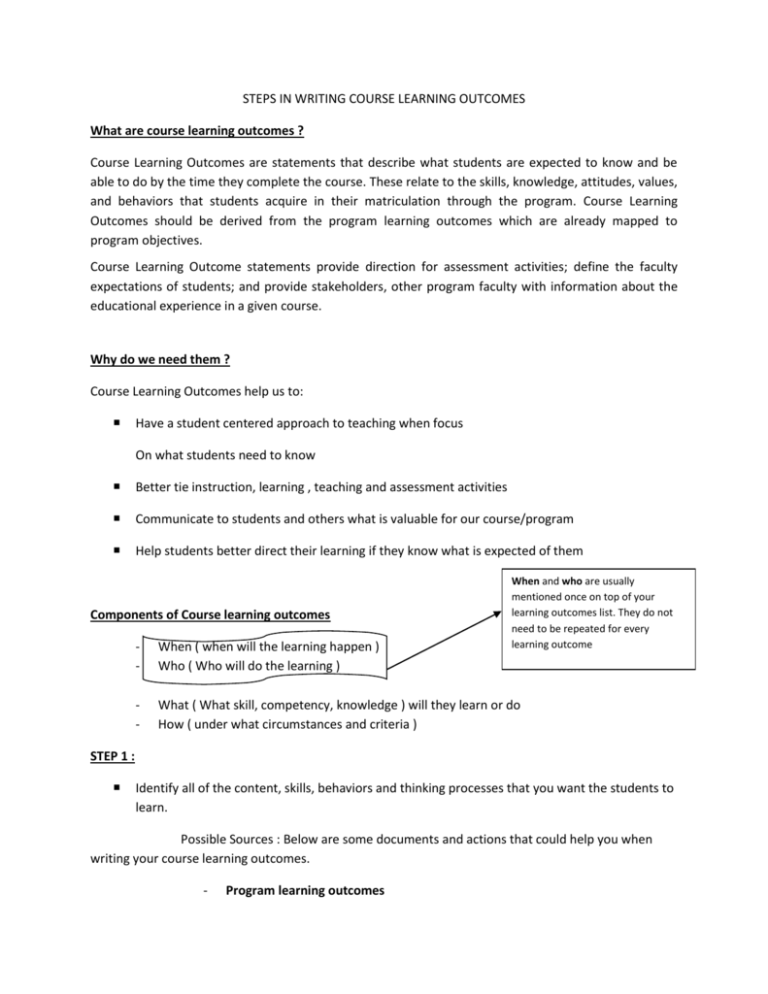
STEPS IN WRITING COURSE LEARNING OUTCOMES What are course learning outcomes ? Course Learning Outcomes are statements that describe what students are expected to know and be able to do by the time they complete the course. These relate to the skills, knowledge, attitudes, values, and behaviors that students acquire in their matriculation through the program. Course Learning Outcomes should be derived from the program learning outcomes which are already mapped to program objectives. Course Learning Outcome statements provide direction for assessment activities; define the faculty expectations of students; and provide stakeholders, other program faculty with information about the educational experience in a given course. Why do we need them ? Course Learning Outcomes help us to: Have a student centered approach to teaching when focus On what students need to know Better tie instruction, learning , teaching and assessment activities Communicate to students and others what is valuable for our course/program Help students better direct their learning if they know what is expected of them Components of Course learning outcomes When and who are usually mentioned once on top of your learning outcomes list. They do not need to be repeated for every learning outcome - When ( when will the learning happen ) Who ( Who will do the learning ) - What ( What skill, competency, knowledge ) will they learn or do How ( under what circumstances and criteria ) STEP 1 : Identify all of the content, skills, behaviors and thinking processes that you want the students to learn. Possible Sources : Below are some documents and actions that could help you when writing your course learning outcomes. - Program learning outcomes - Course syllabi discussions with other instructors textbooks and/or required readings emerging needs of the field (discipline) STEP 2 Make a list of the topics, ideas, concepts, skills and behaviors you think need to be taught from the sources above Refine the list to include only those areas that are most important (Competencies , skills, theoretical knowledge, behaviors etc… ) STEP 3 For each competency identify the level competency you want them have . You can use Bloom taxonomy here to identify competency level : ( Example , do you want them to know something, to do something etc… Identify when Identify how they will show the competency ( this will be helpful when you come to the Assessment). The following table is an example of assessment and learning outcomes applicable to different fields Example of applicable field Arts (History ) Sciences ( Biomedical ) Sciences (Environmental Sciences) Business ( Marketing) Education Learning Outcomes LO 1 : Students will be able to use primary sources to support a written argument LO2 : students will be able to Use modern lab techniques effectively; LO3: Students will be able to write a well-organized, logical, scientifically sound report on a topic in Environmental Science that references the current literature across several disciplines Assessments Essay writing LO4: Students will recognize ethical dimensions in marketing decisions LO 5 : Use a variety of researchbased strategies to develop activities to support the learning Case Studies Practical Lab exam (Clinical exam) Lap report Unit plan Lesson plan Engineering of all students LO6: to analyze the local and global impact of computing on individuals, organizations, and society Exam Embedded questions ( these are questions you develop as part of an exam to specifically measure the outcomes. They could be short essays, True False , Matching etc… ) SETP 4 Write your learning outcome put steps 1, 2, 3, and 4 together Other Examples By the end of the semester students will be able to summarize in writing how cultural diversity can enhance productivity in a workplace. By the end of the semester students will be able to integrate in writing the nine reasons for conducting a needs assessment. By the end of the semester students will be able to design a research study integrating quantitative and qualitative approaches. CHARACTERISTICS OF GOOD LEARNING OUTCOMES Measurable/Assessable/able to be demonstrated. The specified action by the learners must be observable.—writing, talking, drawing etc Clearly stated for both instructors and students Must be outcome specific : The specified action must be done by the learners and not have multiple action verbs . Uses a variety of Bloom’s Taxonomy levels Provide a common language for describing student learning Build on the Program Learning Outcomes Should be communicated to students “ Students can better focus their learning if they know what is expected of them” THINGS TO AVOID - Avoid abstract verbs : understand, know, appreciate , learn, become aware, become familiar with etc…, - - Avoid focusing on multiple performances or competencies : Example : At the end of the course students will be able to locate and analyze different types of rocks Avoid using ambiguous words . Example : Often, frequently occasionally etc… These words can mean different things to different people. For example what is often for me could once a week while often mean twice a week or once a month to someone else .
